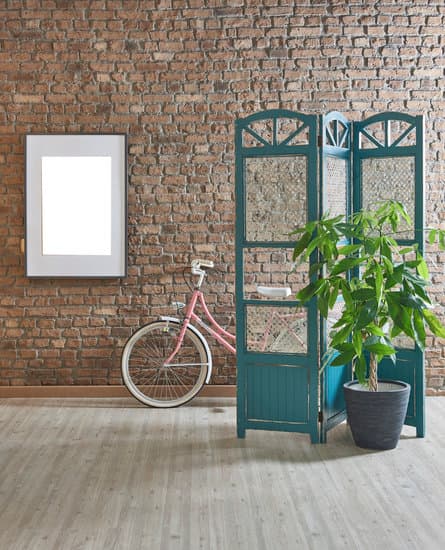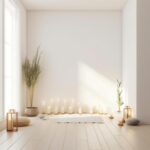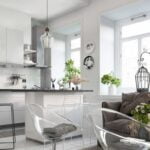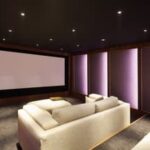Decorating a home is an exciting endeavor that allows individuals to showcase their personal style and create a space that reflects their unique taste. However, diving headfirst into the decoration process without proper planning can lead to overwhelming and disorganized results. This is why it is crucial to start by carefully planning and organizing before embarking on any home decor project.
Planning your home decor not only helps you achieve a cohesive and visually appealing space but also ensures that the process remains smooth and manageable. By taking the time to assess your personal style, setting a realistic budget, researching and gathering inspiration, assessing the space and determining functional needs, creating a timeline, and selecting appropriate color schemes, patterns, textures, furniture, and accessories – you can effectively plan your way towards a beautifully decorated home.
In this article, we will delve into each of these aspects of planning your home decor in detail. From understanding your personal style to working with professionals and contractors, every step plays a crucial role in achieving the desired aesthetic while maintaining functionality.
So whether you’re embarking on a complete overhaul or simply looking to refresh certain areas of your home, read on to discover how to effectively plan for decorating your home and create an environment that truly feels like yours.
Assessing Your Personal Style and Aesthetic Preferences
When embarking on a home decoration project, it is crucial to take the time to assess your personal style and aesthetic preferences. Understanding your own tastes and preferences before beginning the planning process will help you create a space that truly reflects your personality and makes you feel at home. Here are some key points to consider when assessing your personal style and aesthetic preferences:
Determine Your Style
One of the first steps in assessing your personal style is determining what design aesthetic resonates with you. Take a moment to think about spaces that have made an impression on you or evoke a sense of comfort and happiness. Do you lean towards a more traditional, minimalist, or eclectic style? Researching different design styles online, browsing through magazines, or visiting showrooms can help you identify which styles appeal to you the most.
Consider Color Palettes
Color plays a significant role in creating the desired atmosphere in any room. Think about the colors that make you feel calm, energized, or inspired. Consider creating a mood board or collecting swatches of colors that catch your eye to determine which color palettes align with your personal style. It is also essential to note that different colors evoke different emotions, so understanding color psychology can guide you in choosing hues for different spaces within your home.
Explore Patterns and Textures
Patterns and textures can add depth and visual interest to any space. Think about whether you prefer bold patterns or more subtle textures. Assess how these elements fit into your overall design aesthetic and consider incorporating them into various aspects of your decor, such as upholstery fabrics, rugs, wallpaper, or even decorative accents like throw pillows or curtains.
Taking the time to assess your personal style and aesthetic preferences before diving into home decoration planning ensures that every decision made along the way aligns with who you are as an individual. It sets a solid foundation for creating a cohesive and visually appealing space that you will love to call home.
Setting a Realistic Budget
One crucial aspect of planning to decorate a home is setting a realistic budget. Without a budget, it’s easy to overspend and go overboard with the decor, causing unnecessary financial strain. By establishing a budget, you can make informed decisions and prioritize your spending throughout the decorating process. Here are some practical steps to determine a realistic budget for your home decor project:
Assess Your Financial Situation
Start by assessing your current financial situation and determining how much you can comfortably allocate towards decorating your home. Consider factors such as your income, savings, and any other financial obligations you may have. Be realistic about what you can afford to avoid putting yourself in financial stress.
Define the Scope of Your Project
Next, consider the scope of your home decor project. Are you redecorating just one room or the entire house? Will you be making significant renovations or simply updating the furnishings and accessories? Defining the scope will help you estimate costs more accurately and prevent unforeseen expenses.
Do Your Research
Take the time to do research on the average costs of materials, furniture, and services that you’ll need for your project. Look into different suppliers or contractors to get an idea of pricing ranges in your area. This information will give you a better understanding of what is feasible within your budget.
Plan for Contingencies
When setting a budget, it’s essential to plan for contingencies as unexpected expenses may arise during the course of the project. It’s wise to set aside some extra funds as a buffer to handle any unforeseen costs without derailing your entire budget.
By setting a realistic budget before starting your home decor project, you can enjoy peace of mind while making purchasing decisions and avoid unnecessary financial strain. Remember that it’s possible to create beautiful spaces on any budget with some creativity and smart planning.
Researching and Gathering Inspiration
When it comes to decorating your home, researching and gathering inspiration plays a crucial role in creating a space that reflects your personal style and meets your design goals. Before diving into the planning process, take the time to explore various sources of inspiration. This will not only help you discover new ideas but also provide guidance on how to bring them to life in your own home.
One effective way to gather inspiration is by utilizing social media platforms such as Pinterest and Instagram. These platforms are teeming with beautifully curated home decor images that can spark ideas for different color palettes, furniture arrangements, and overall design concepts. Creating dedicated boards or saving posts can help you organize and refer back to your favorite ideas when it’s time to make decisions.
In addition to social media, exploring design websites and blogs can offer valuable insights into the latest trends and innovative design solutions. These websites often feature before-and-after transformations, detailed tutorials, and interviews with interior designers that can inspire fresh approaches or ignite creativity.
While digital platforms provide convenient access to a plethora of inspiring visuals, there is something uniquely captivating about seeing designs in person. Visiting showrooms, galleries, and model homes allows you to experience textures, materials, and colors firsthand. You can observe how different elements come together harmoniously and get a better sense of scale and proportion.
Creating mood boards is another effective technique for gathering inspiration during the planning phase. Mood boards serve as visual representations of your vision by compiling images that convey the desired atmosphere or aesthetic. Whether you choose to create physical collages or digital versions using tools like Canva or Adobe Spark, mood boards act as references throughout the decorating process, enabling you to stay focused on your initial concept.
By dedicating time towards researching and gathering inspiration from a variety of sources – including social media platforms, design websites, visiting showrooms, and curating mood boards – you’ll empower yourself with a wealth of idea and style references. This knowledge will serve as a foundation to make informed decisions and ultimately create a well-planned home decor that speaks to your personal aesthetic preferences.
Assessing the Space and Determining Functional Needs
When planning to decorate your home, it is crucial to assess the space and determine its functional needs. Understanding the layout, size, and existing elements of each room will ensure that your decor is not only aesthetically pleasing but also practical and efficient.
Start by taking measurements of the rooms you plan to decorate. This will help you determine the furniture sizes and layouts that will best fit the space. Consider any architectural features such as windows, doors, or built-in shelves that may impact your design choices.
Next, think about how you will use each room and what its functional needs are. For example, a living room may need ample seating for hosting guests or a home office may require sufficient storage and workspace. By identifying these requirements early on, you can make informed decisions when selecting furniture and accessories.
It’s also essential to take into account any existing elements that you want to keep or work around. This could include flooring, wall colors, or architectural details that you want to highlight in your design. By considering these elements during the planning stage, you can create a cohesive look that incorporates both new additions and existing features seamlessly.
Determining the functional needs of each room will guide your decor decisions and contribute to a well-designed space that aligns with your lifestyle. Whether it’s adding extra storage solutions in the kitchen or creating a cozy reading nook in the bedroom, understanding how you will use each area will lead to a more thoughtful and personalized home decor plan.
Creating a Timeline and Establishing Priorities
When embarking on a home decor project, it is crucial to create a timeline and establish priorities to stay organized and ensure that the process runs smoothly. Without a well-defined plan, it’s easy to become overwhelmed and lose track of your goals. By breaking down the tasks into manageable steps, you can tackle them one at a time, leading to a successful outcome.
To create an effective timeline, start by determining your end goal. Consider when you would like the project to be completed and work backward from there. Take into account any events or occasions that may influence your deadline, such as hosting guests or upcoming holidays. This will help you set realistic expectations and allocate appropriate time for each phase of the project.
Next, establish priorities by identifying which areas or rooms should be tackled first. Think about what spaces are used most frequently or require immediate attention. For example, if you spend a significant amount of time in your living room, prioritize decorating this area before moving on to less-used spaces such as guest bedrooms or offices.
Once you have determined your priorities, break down each task into smaller steps or milestones. This will make the process more manageable and allow you to celebrate small victories along the way. Consider creating a visual timeline using a calendar or project management software where you can assign deadlines for each task.
Remember that unexpected delays or unforeseen circumstances may arise during the course of your home decor project. It is important to be flexible with your timeline while still staying focused on achieving your overall vision. By establishing priorities and creating a well-thought-out timeline, you will be better equipped to handle any challenges that come your way.
By approaching your home decor planning with a clear timeline and established priorities, you will have peace of mind knowing that each step is being taken intentionally towards achieving your desired outcome. This organization will not only keep you on track but also prevent unnecessary stress along the way. So grab your calendar and start mapping out your timeline, allowing you to enjoy the process of transforming your space into a beautifully decorated home.
Selecting Color Schemes, Patterns, and Textures
Color schemes, patterns, and textures play a crucial role in the overall aesthetic of a home. When selected carefully and coordinated well, they can create a harmonious and visually appealing atmosphere that reflects your personal style and enhances the ambiance of each room. In this section, we will explore the essential aspects of selecting color schemes, patterns, and textures for your home decor.
One important factor to consider when choosing a color scheme is color psychology. Different colors evoke different emotions and moods, so it’s important to select colors that align with the desired atmosphere of each room. For example, warm colors like reds and oranges can create a cozy and inviting feel in living spaces, while cool colors like blues and greens promote calmness in bedrooms or study areas.
Coordinating patterns is another key aspect of home decor planning. Mixing and matching patterns can add visual interest to a space but should be done carefully to create a cohesive look. One approach is to choose one dominant pattern as the focal point, such as a bold striped wallpaper or a large floral print on an accent chair, then use smaller-scale patterns as complementary elements throughout the room.
Textures also contribute to the overall sensory experience of a space. Incorporating different textures can add depth and tactile interest to your home decor. Consider mixing smooth surfaces with rough ones, like pairing a plush velvet sofa with a rustic wooden coffee table. Combining different textures not only adds visual appeal but also creates an inviting and comfortable environment.
| Color Scheme | Pattern | Texture |
|---|---|---|
| Neutral Palette: Beige, White | Mix of Stripes and Geometric Prints | Smooth Leather, Faux Fur |
| Bold and Vibrant: Red, Yellow, Blue | Large Floral Prints | Rough Textured Rug, Knitted Pillows |
| Soothing and Serene: Soft Blues, Greens | Subtle Damask Patterns | Silk Drapes, Woven Grass Baskets |
Remember that personal preference should ultimately guide your selection of color schemes, patterns, and textures. Experimenting with different combinations and exploring your creativity can help you achieve a home decor that truly reflects your unique style and personality. With careful consideration and planning, you can create a visually stunning and inviting space that you will enjoy for years to come.
Furniture and Accessories Selection and Placement
Choosing the right furniture and accessories is crucial in creating a well-designed and cohesive space. This section will provide guidance on selecting suitable furniture and accessories that align with your personal style, budget, and the functional needs of the space. Additionally, it will offer tips on arranging furniture and strategically placing accessories to maximize the visual appeal and functionality of each room.
When selecting furniture for your home, it’s important to consider both style and functionality. Start by assessing the size of your space and determine the scale of furniture that would best fit.
Measure the dimensions of each room to ensure that you choose appropriately sized pieces that won’t overwhelm or overcrowd the space. Consider how you plan to use each room – for example, a living room may require comfortable seating options, while a dining room needs a table and chairs for hosting meals.
In terms of style, think about your overall aesthetic preferences. Are you drawn towards modern and minimalist designs? Or do you prefer a more traditional or eclectic look? Take into account existing architectural elements in your home and try to choose furniture that complements those features. Remember that mixing different styles can also create an interesting and unique design.
Once you have selected your furniture pieces, placement becomes crucial in creating an inviting and balanced atmosphere. Start by considering the focal point of each room – this could be a fireplace, a beautiful window view, or even a piece of artwork. Arrange your larger furniture items around this focal point to create a sense of harmony.
When it comes to accessories such as rugs, lighting fixtures, pillows, artwork, and decorative objects, they play an essential role in adding personality and character to a space. Think about using accessories to add pops of color or texture that complement your chosen color scheme or patterns. Experiment with different placements until you find what works best for each room.
| Selection Tips | Placement Tips |
|---|---|
| Consider the scale of furniture in relation to the size of the room | Arrange furniture around a focal point to create balance |
| Choose furniture that complements your overall style and existing architectural elements | Add accessories strategically to add personality and visual interest |
| Take into account the functional needs of each space when selecting furniture | Experiment with different placements until you find what works best for each room |
Working with Professionals, Contractors, and Designers
Working with professionals, contractors, and designers can greatly enhance the outcome of your home decorating project. While DIY projects can be fulfilling, there are instances when seeking professional help is necessary to achieve the desired results. This section will discuss the benefits of working with professionals, provide guidance on effectively communicating with them, and offer advice on hiring contractors and collaborating with designers.
The Benefits of Seeking Professional Help
One of the primary benefits of working with professionals, such as interior designers or decorators, is their expertise and experience in creating functional and aesthetically pleasing spaces. These professionals have a deep understanding of design principles and can provide valuable insights into how to make the most out of your space. They can assess your needs, preferences, and style to create a tailored design plan that suits your vision.
Contractors also play a vital role in home decorating projects, particularly when it comes to renovations or structural changes. Hiring a reliable contractor ensures that the necessary permits are obtained and that the work is done safely and up to code. Additionally, contractors have access to skilled tradespeople who can handle specific tasks such as plumbing or electrical work.
Communicating with Professionals
Effective communication is crucial when working with professionals, contractors, or designers. Clearly articulating your vision and expectations upfront will help them understand your needs better. Communication should be ongoing throughout the project to ensure everyone remains updated on progress and any changes that may need to be made.
It’s essential to listen actively and consider professional advice while still maintaining a clear sense of what you want for your home. Being open-minded allows for a collaborative approach that leverages both your creativity and the expertise of professionals.
Hiring Contractors and Collaborating with Designers
When hiring contractors or collaborating with designers, it’s important to conduct thorough research before making any commitments. Seek recommendations from trusted sources or ask for referrals from friends or family. Take the time to review their portfolios, read reviews from previous clients, and ensure they have the necessary licenses or certifications.
Before finalizing any contracts, it is advisable to clearly outline terms and conditions, including payment schedules and project timelines. This helps ensure a clear understanding of expectations, ultimately leading to a smoother working relationship.
Collaborating with designers involves sharing your ideas, preferences, and budget constraints so they can develop a design plan within those parameters. Regular meetings and feedback sessions allow for continuous communication and adjustments along the way.
Working with professionals, contractors, and designers adds valuable expertise to your home decorating project. With effective communication and collaboration, you can bring your vision to life while benefiting from their knowledge and skills.
Conclusion
In conclusion, the process of planning and organizing your home decor is vital to achieving the desired results.
By taking the time to assess your personal style, setting a realistic budget, researching and gathering inspiration, assessing the space and functional needs, creating a timeline and establishing priorities, selecting appropriate color schemes and textures, choosing suitable furniture and accessories, and potentially working with professionals or contractors, you can create a cohesive and visually appealing space that reflects your unique taste and personality.
By following these steps, not only will you be able to create a beautiful home that you can be proud of, but you will also ensure that it is practical and efficient in meeting your everyday needs. This careful planning will prevent overspending and going overboard with the decor while maximizing the visual appeal and functionality of each room.
Remember to enjoy the process as well. Home decor should be an enjoyable journey of self-expression. Take pride in your well-planned home as it becomes a reflection of who you are. As you see your vision come to life, take a moment to appreciate the fruits of your planning. Your beautifully decorated home will bring joy and satisfaction for years to come.
Frequently Asked Questions
Where do I start when decorating my house?
When embarking on decorating your house, it’s important to start with a clear vision or concept in mind. Begin by assessing your personal style preferences and the atmosphere you want to create in each room.
Consider factors such as color schemes, furniture layout, and overall themes that align with your taste and lifestyle. Start by making a list of must-have items or features that you envision in each space, which will serve as a foundation for your decorating journey.
How do I figure out how to decorate my house?
Figuring out how to decorate your house requires a multi-step process that involves careful planning and consideration. To begin, take time to explore various sources of inspiration such as home decor magazines, websites, and social media platforms specific to interior design. Gather ideas and images that resonate with you, paying attention to colors, textures, patterns, and styles.
Consider visiting local furniture stores or attending home expos for hands-on experience with different pieces of decor. Also, don’t hesitate to seek guidance from professional interior designers or rely on online resources that offer decorating tips and tutorials.
What is the 2 3 rule in decorating?
The 2 3 rule in decorating refers to the recommended ratio of pattern use within a space. It suggests using two dominant patterns alongside three complementary ones throughout a room’s design scheme for optimal visual appeal. This rule helps strike a balance between harmony and variety, preventing an overwhelming or monotonous aesthetic in your decor choices.
Keep in mind that the dominant patterns should be selected based on their scale and impact while the complementary patterns can provide subtle accents to complement the overall design theme of the room. Mixing prints, textures, and colors according to the 2 3 rule can result in an aesthetically pleasing and well-coordinated interior space.

I’m thrilled to be your companion on this exciting journey through the world of home decor and design. With a passion for turning houses into homes and a keen eye for the finer details, I’m here to help you transform your living spaces into beautiful, functional, and meaningful havens.





